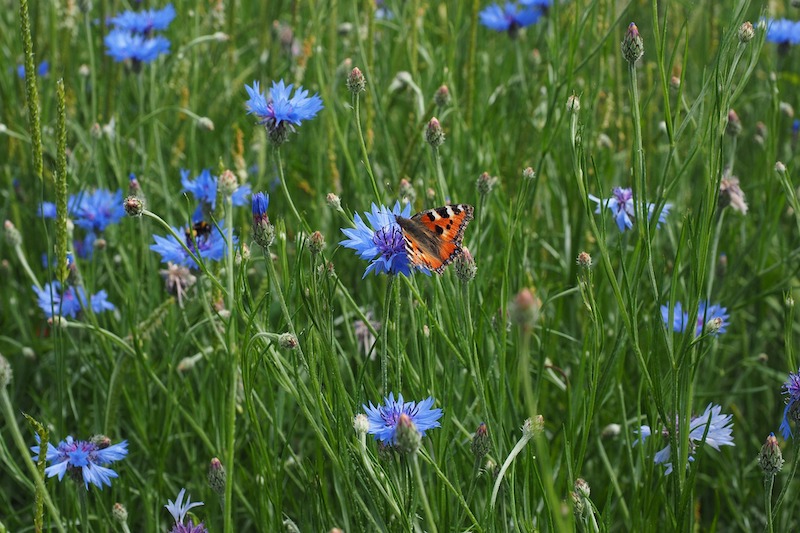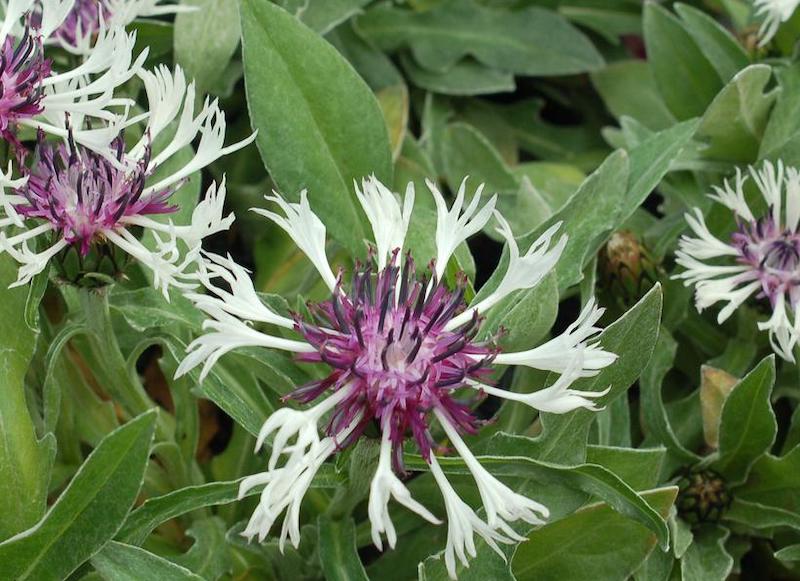Growing Bachelor Button
Bachelor Button (Centaurea cyanus) is an old-fashioned perennial favorite in the garden. These plants are native to Europe and naturalized in North America, growing in US Zones 3-8. There are many new varieties of Bachelor Button that bloom from May through August if regularly deadheaded. Bachelor Button features a beautiful purple-blue flower, although other lovely varieties have been developed that have shades of white, purple, pink, and dark indigo. The foliage is silvery green, the blossoms are edible, and are excellent when used in cut flower arrangements. Most varieties grow to 1-3 feet in height with an equal spread.

Bachelor Button will tolerate a variety of growing conditions but ideally, plant it in a full sun location in soil that is well draining with a loam to sandy texture. Bachelor Button tends to naturalize by seed, so you can leave the dried seedheads on the plant for the birds to enjoy, or deadhead Bachelor Button directly after flowering.
Planting Bachelor Button
Plant Bachelor Button in an area that receives full sun, at least 6-8 hours of direct sunlight daily. If planted in a partial sun location, they can become leggy and may have fewer blooms. They prefer well-draining soil, as soggy conditions can potentially create root rot. If your soil holds on to moisture, amend it with sand and some fine gravel.

Watering Bachelor Button
Water Bachelor Button consistently during the growing season, checking the soil to maintain adequate moisture, particularly during the hot summer months. As they grow, plants become more drought tolerant so you can scale back on watering frequency. This plant goes dormant in the winter and will not require any supplemental water after the first frost.
Fertilizing Bachelor Button
Fertilize Bachelor Button when newly planted or in the spring, and continue once a month using a well-balanced, water-soluble, organic fertilizer with an NPK ratio around 10-10-10. If you notice foliar growth over flower production, apply a bloom-boosting fertilizer once a month during the growing season. Always water the soil before applying fertilizer to avoid burning the roots, and follow package instructions.
Pruning Bachelor Button
Deadhead spent flowers and cut the stems back to the base of the plant to encourage fuller growth while eliminating naked flower stems. Save some seeds to start the next growing season, or allow the dried seeds to disperse naturally. You can cut all growth to the ground in late fall, or wait until early spring to clean up the spent foliage.

Caring For Bachelor Button in Pots
Bachelor Button can be easily grown in containers. Give potted plants plenty of sunlight, as full sun will help maintain a balanced shape and encourage plenty of blooms. The potting soil can be average to nutrient rich, but it should be loose and fast draining. Be sure the pot has plenty of drainage holes at the bottom to drain excess water and prevent root rot. Soil in pots may dry out faster than in the ground, so check moisture levels more frequently, and keep the soil consistently moist but not soggy. Mature plants need less frequent watering; water when the first few inches of soil are dry.
Winter Care for Bachelor Button
Bachelor Button is a hardy perennial down to Zone 3-4, and due to its ability to reseed easily, you will undoubtedly have more plantlets the following growing season. Allow dried seedheads to remain on the plant to be enjoyed in the fall by birds, or if you want a tidier look, trim the foliage back to a few inches above soil level in late fall. This perennial will go dormant during winter and does not require further care or protection during this time.
 |
Author Chris Link - Published 03-10-2023 |
